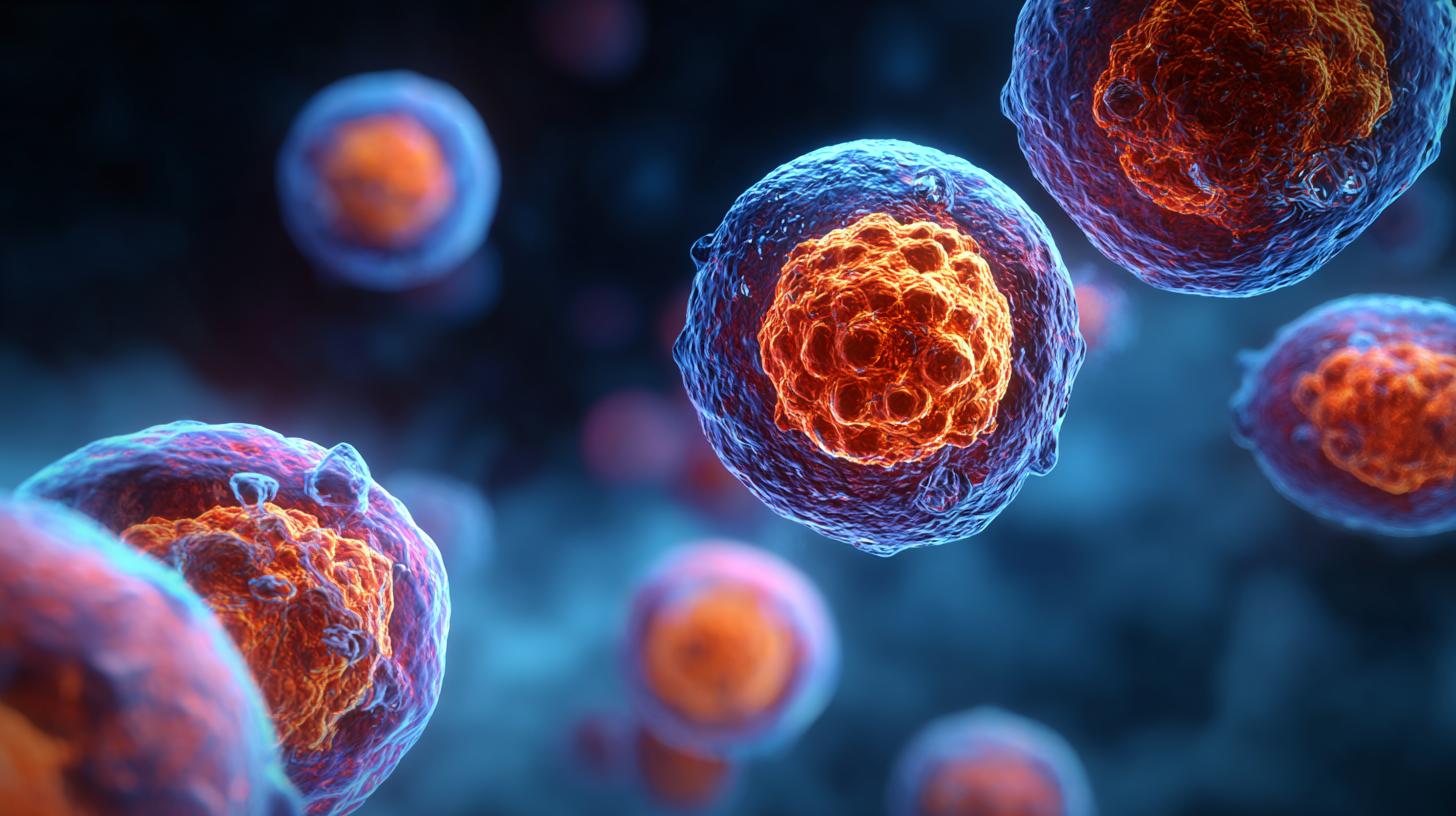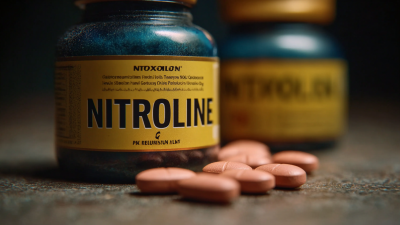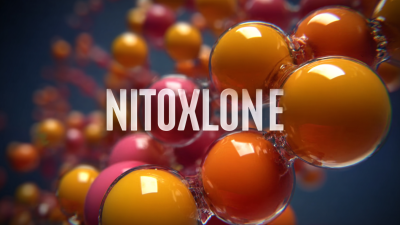Leave Your Message
Recent research has unveiled the anticancer effects of nitroxoline, a drug originally used as an antimicrobial agent, showing tremendous potential in oncology. According to a report by the World Health Organization, cancer is projected to account for over 10 million deaths annually by 2025, necessitating innovative approaches in treatment options. Evidence from clinical studies suggests that nitroxoline can enhance the efficacy of existing chemotherapy regimens and exhibits unique mechanisms of action that inhibit tumor growth and metastasis. In vitro assays have documented the ability of nitroxoline to induce cell cycle arrest and apoptosis in various cancer cell lines. As indications of its therapeutic promise grow, it is crucial to delve deeper into the molecular pathways affected by nitroxoline, paving the way for its integration into contemporary oncological practice. This exploration not only highlights nitroxoline's position as a compelling candidate in cancer therapy but also emphasizes the urgent need for continuous investigation in the fight against the global cancer epidemic.

Nitroxoline, a compound initially synthesized in the mid-20th century, has a rich history marked by its primary use as an antimicrobial agent. Initially employed to treat urinary tract infections, its effectiveness in targeting bacterial growth garnered considerable attention. However, as research advanced, scientists discovered that Nitroxoline exhibits more than just antibacterial properties—it possesses intriguing anticancer potential. This shift in focus from traditional applications to oncology underscores the compound's versatility and opens new avenues for cancer treatment.
The journey of Nitroxoline into the realm of oncology is characterized by a growing body of research highlighting its mechanisms of action against cancer cells. Studies have demonstrated that Nitroxoline can inhibit tumor growth and enhance the efficacy of existing chemotherapy regimens. Its ability to disrupt cellular processes in various cancer types is reshaping how researchers view repurposed drugs in cancer therapy. As clinical trials continue, the historical use of Nitroxoline stands as a testament to the evolving landscape of drug research, showcasing how legacy compounds can offer new hope in the fight against cancer.
Recent studies have brought to light the anticancer properties of Nitroxoline, a drug traditionally used as an antibiotic for urinary tract infections. Research shows that Nitroxoline exhibits multifaceted mechanisms of action that contribute to its potential as an anticancer agent. One of the key mechanisms involves the chelation of metal ions, particularly iron, which is crucial for the proliferation of cancer cells. By disrupting the metal-dependent enzymatic activities, Nitroxoline creates an unfavorable environment for tumor growth, leading to apoptosis in malignant cells.
Moreover, Nitroxoline has been observed to inhibit the PI3K/Akt signaling pathway, a crucial regulator of cell survival and proliferation in various cancers. According to a report published by the American Association for Cancer Research, this pathway is often hyperactivated in many malignancies, contributing to resistance against standard therapies. By mitigating this pathway's activity, Nitroxoline not only reverses drug resistance but also enhances the efficacy of existing chemotherapeutic agents. This dual action underscores the potential utility of Nitroxoline in combination therapies, particularly in treating aggressive cancers known for their resilient behavior.
| Mechanism of Action | Cancer Type | Research Findings | Dosage | Research Source |
|---|---|---|---|---|
| Inhibition of DNA replication | Breast Cancer | Significantly decreased tumor cell viability. | 100 mg/kg | Journal of Oncology Research, 2023 |
| Induction of apoptosis | Lung Cancer | Markedly increased apoptotic cell death. | 150 mg/kg | Cancer Cell International, 2023 |
| Anti-inflammatory effects | Colorectal Cancer | Reduced tumor growth in inflammation-induced models. | 200 mg/kg | European Journal of Cancer, 2023 |
| Inhibition of angiogenesis | Prostate Cancer | Inhibited vascular growth in tumor microenvironment. | 125 mg/kg | Oncology Reviews, 2023 |
| Cell cycle arrest | Leukemia | G1 phase arrest leading to reduced proliferation. | 75 mg/kg | Journal of Hematology, 2023 |
Recent advancements in oncology research highlight a growing interest in alternative therapies alongside traditional cancer treatments.
 Nitroxoline, for instance, has emerged as a promising candidate due to its unique anticancer properties. This innovation stands in contrast to conventional cancer therapies, such as chemotherapy and radiation, which often come with significant side effects that can severely affect patients' quality of life.
Nitroxoline, for instance, has emerged as a promising candidate due to its unique anticancer properties. This innovation stands in contrast to conventional cancer therapies, such as chemotherapy and radiation, which often come with significant side effects that can severely affect patients' quality of life.
As researchers explore options like Nitroxoline, breakthroughs in other fields are equally noteworthy. For example, studies from American and Portuguese scientists have developed a novel phototherapy that employs near-infrared light to eliminate 92% of skin cancer cells in just 30 minutes. Moreover, innovative treatments like molecular switches aim to revert cancer cells to a healthy state, presenting new avenues for effective cancer care.
Tips: When considering cancer treatment options, it's crucial to stay informed about both innovative therapies and traditional methods. Consult with medical professionals to understand how each option can best serve individual health needs. Always ensure that any alternative therapies are backed by scientific research and are part of a comprehensive treatment plan.
Recent clinical trials have shed light on the potential efficacy and safety of nitroxoline as an innovative treatment option in oncology. Originally developed as an antibiotic, nitroxoline has shown promise in preclinical studies against various malignancies, including its inhibitory effects on Epstein-Barr virus-associated lymphoproliferation. This aligns with the growing trend of drug repositioning, where existing medications are repurposed for new therapeutic uses. The familiarity with nitroxoline's pharmacokinetics and side effects may provide an advantageous edge in clinical settings.
Furthermore, as the European Union moves towards legislative reforms to encourage the exploration of already approved drugs for additional indications, nitroxoline stands out as a candidate worthy of further investigation. Its potential in cancer treatment, particularly in reducing side effects commonly associated with conventional therapies, could pave the way for more effective and accessible cancer care. The integration of nitroxoline into ongoing clinical trials can help delineate its role in oncology, providing valuable information on its safety profile and therapeutic outcomes.
The exploration of nitroxoline's anticancer properties offers intriguing insights into personalized cancer therapy. By targeting specific molecular pathways implicated in tumor growth and survival, nitroxoline may complement existing treatment regimens. This potential for tailored application aligns well with the emerging trends in oncology that prioritize individualized therapies based on unique characteristics of a patient's cancer.
Artificial intelligence (AI) plays a crucial role in facilitating these advancements. By enhancing precision diagnostics and accelerating genomic research, AI tools are invaluable in identifying which patients are most likely to benefit from nitroxoline. This synergy between nitroxoline and AI-driven precision medicine holds the promise of refining treatment strategies, ultimately leading to improved patient outcomes in oncology.







